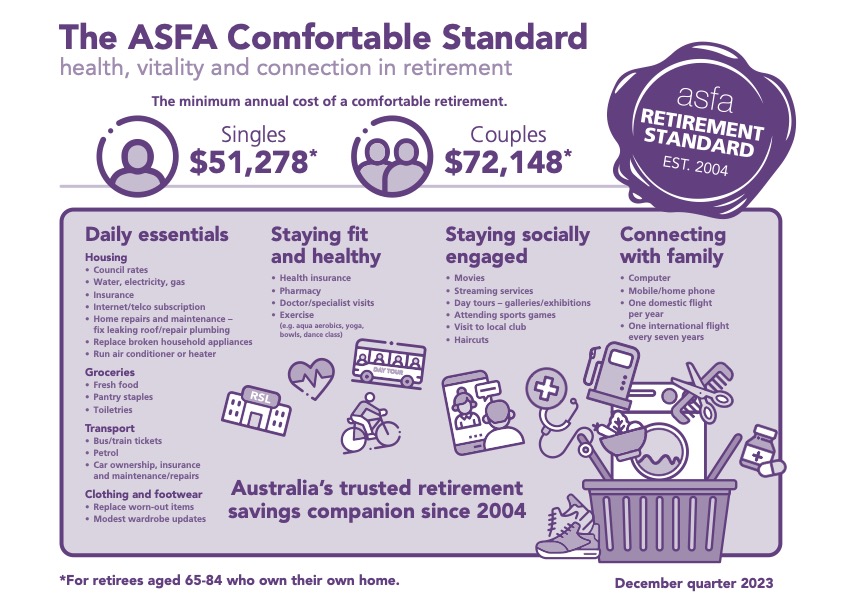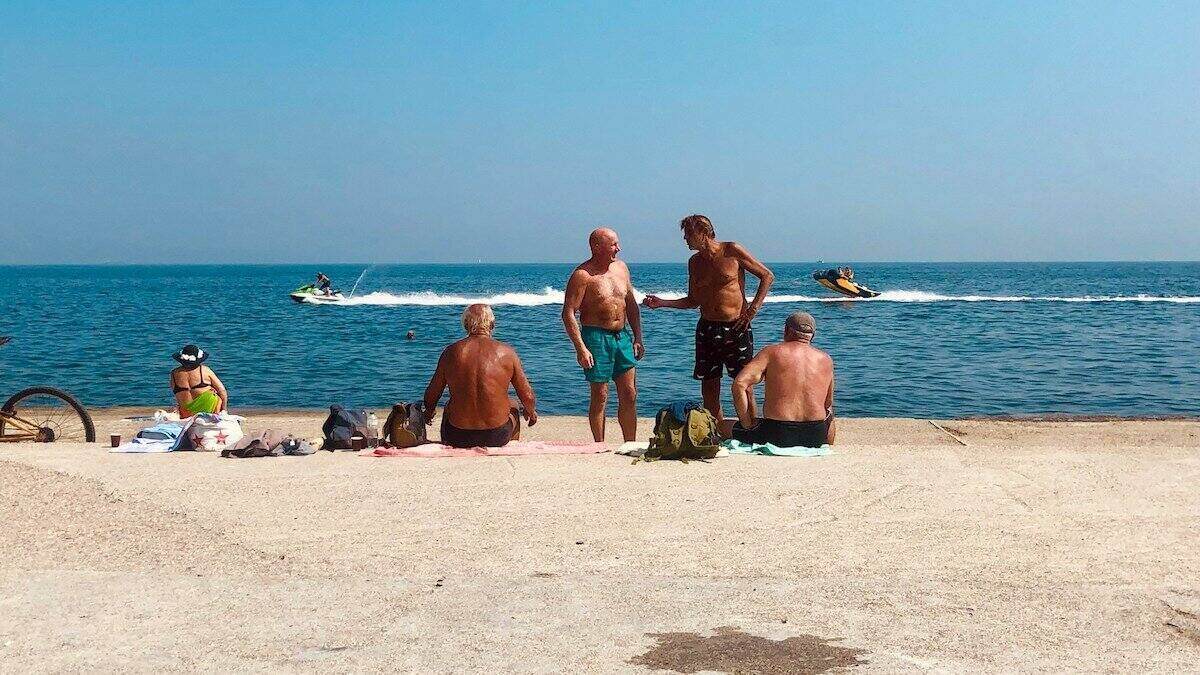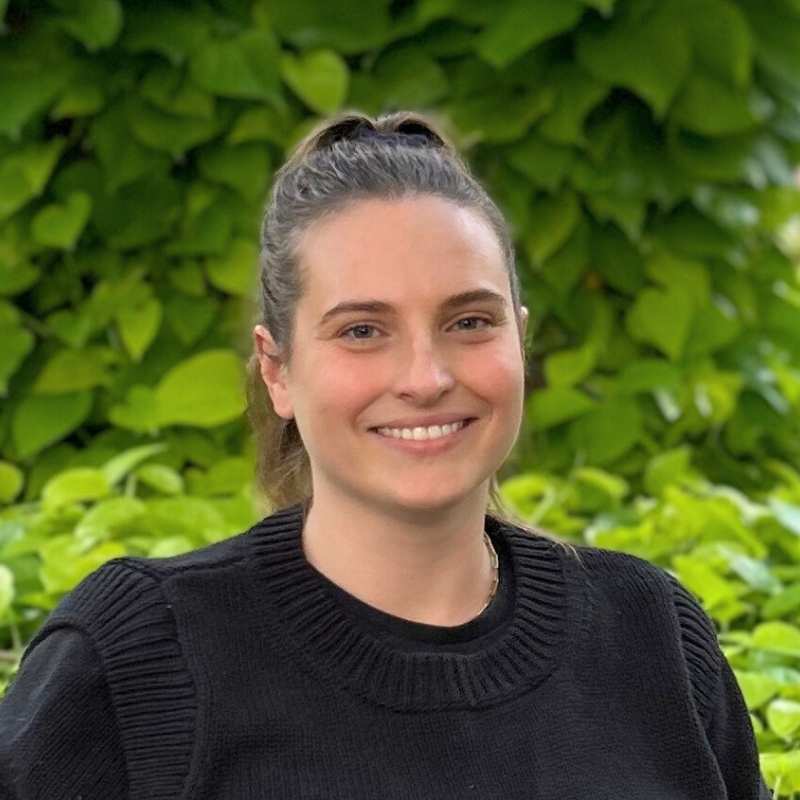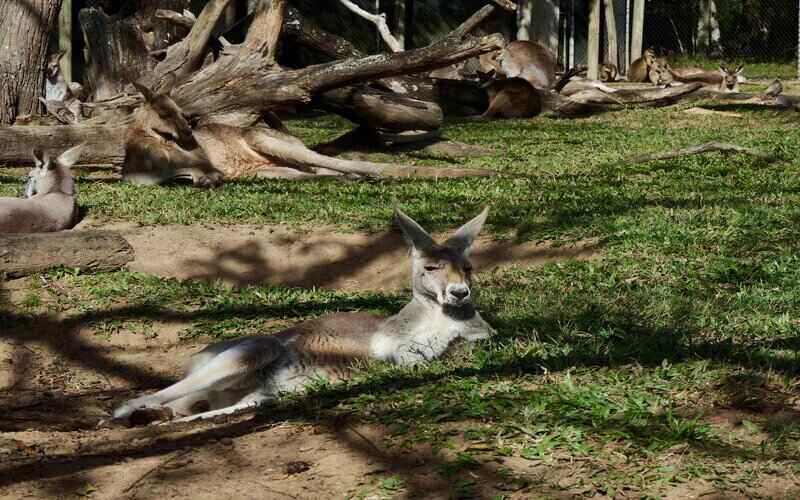The latest Association of Superannuation Funds of Australia (ASFA) quarterly Retirement Standard report reveals a single Aussie under 85 must spend more than $51,000 a year in order to enjoy a comfortable retirement.
That figure is higher for couples, with a comfortable retirement for two people aged 65 to 84 costing more than $72,000 annually.
That’s assuming a retiree lives in a home they own, will draw down on their super balance, and will receive a part Age Pension.
Those figures climbed around 3.5% over the course of 2023.
That’s slightly less than the broader Consumer Price Index’s 4.1% jump over the same period.
The superannuation body defines a comfortable retirement as one that includes premium health insurance, regular leisure activities, occasional meals out, an annual domestic holiday, and an international trip every seven years.

Infographic courtesy of ASFA
For Aussies considering retiring soon, ASFA outlined the super balances one needs at age 67 to ensure their comfort during the second half of their life.
As of December, a couple would need a superannuation balance of $690,000 to retire comfortably at 67, while a single person would need a balance of $595,000.
On the other hand, both couples and singles looking to retire modestly only need $100,000 in their super accounts to do so.
A modest retirement is said to include basic health insurance, infrequent activities, an annual domestic trip or a few short breaks, and a need to keep an eye on utility usage.
“Retiree budgets have been under substantial pressure for the past two years due to the high cost of essential goods and services,” ASFA CEO Mary Delahunty said.
“Fortunately, we are seeing price increases in the key categories that make up retiree budgets – home and content insurance, fruit and vegetables, fuel and electricity – begin to ease.”
The soaring cost of house, home and contents, and car insurance, though easing, is still weighing heaviest on retirees’ budgets, having increased 16.2% last year.
Rising electricity prices are also still leaving a mark, with the cost of power climbing 6.9%.
Though, that was less than the 14.5% rise recorded in the year to the September quarter, and was moderated by government rebates.
The cost of food also rose 4.5% over the year to the December quarter – down from the 9.2% jump the ASFA recorded in the prior 12-month period.
The findings come just one day after the Aged Care Taskforce Report called for wealthier retirees to pay their own aged care costs.
It found the current funding system, which sees the Federal Government footing the bill for around 75% of the nation’s aged care and 95% of its home care costs, is suboptimal.
Older Australians apparently most susceptible to scammers
The most recent figures from the ACCC’s Scamwatch shows Australians aged over 65 years were victims in around a quarter of scams reported to the agency in 2023.
They also bore the brunt of nearly $121 billion of losses, out of close to $477 billion lost to scammers across the entirety of Australia last year.
For reference, Australians aged over 65 make up 16% of the nation’s population.
Fortunately, the tide of criminal activity appears to have turned.
“Australians reported $82.1 million in losses to Scamwatch in the quarter,” Scamwatch’s latest quarterly update reads.
“This is a reduction of 43% from the same quarter in 2022, and 26% from the July to September 2023 quarter.”
Image by Elena Rabkina on Unsplash



 Harrison Astbury
Harrison Astbury
 Denise Raward
Denise Raward

 William Jolly
William Jolly
 Aaron Bell
Aaron Bell

